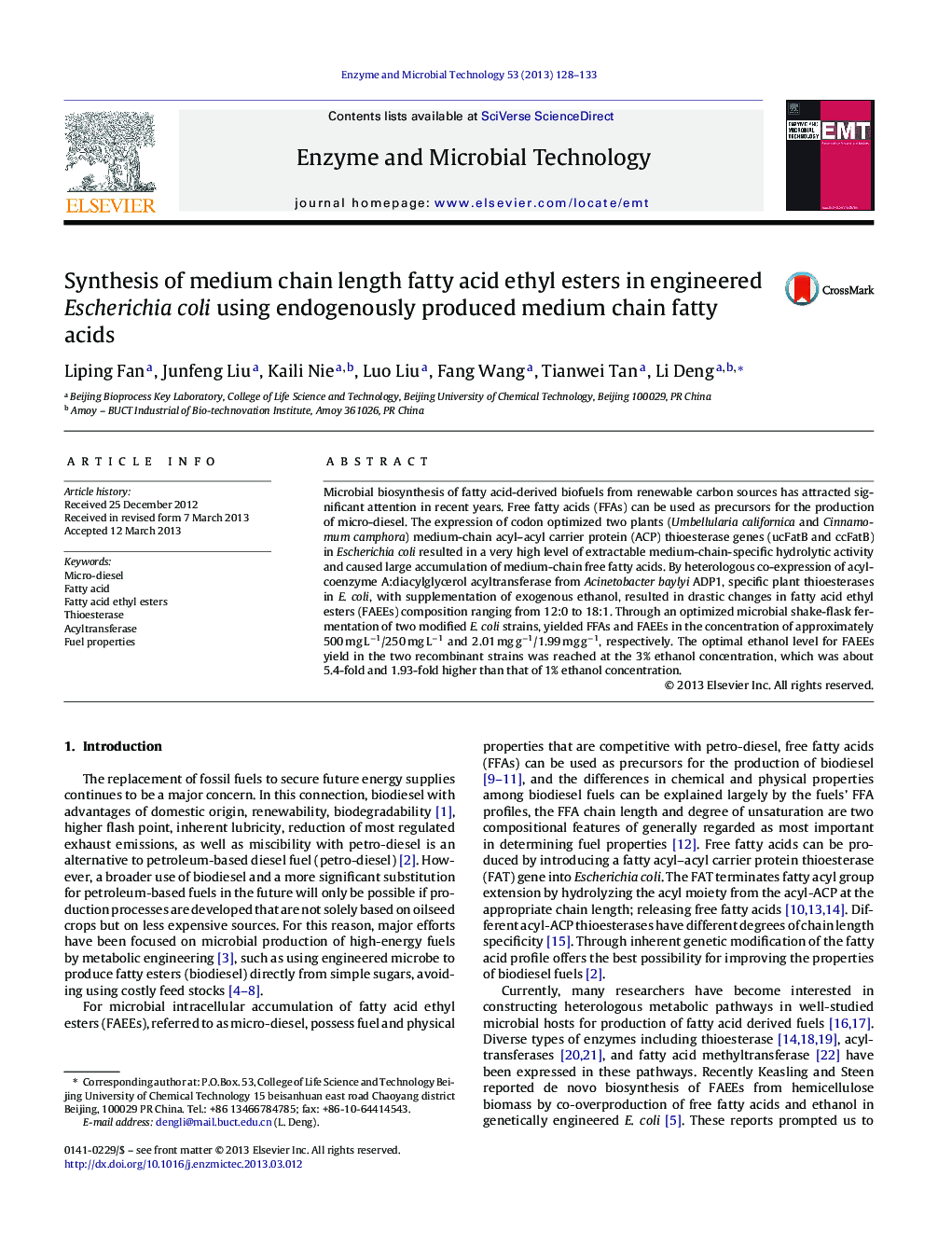| کد مقاله | کد نشریه | سال انتشار | مقاله انگلیسی | نسخه تمام متن |
|---|---|---|---|---|
| 17041 | 42635 | 2013 | 6 صفحه PDF | دانلود رایگان |

• Condon optimized medium-chain thioesterase gene and atfA gene were co-expressed in Escherichia coli.
• In recombinant strains, fatty acids and fatty acid ethyl esters’ composition changed sharply.
• The maximum yield of FFAs and FAEEs are 500 mg L−1 and 2.01 mg g−1, respectively.
• The optimal ethanol level for FAEEs yield reached at the 3% ethanol concentration.
Microbial biosynthesis of fatty acid-derived biofuels from renewable carbon sources has attracted significant attention in recent years. Free fatty acids (FFAs) can be used as precursors for the production of micro-diesel. The expression of codon optimized two plants (Umbellularia californica and Cinnamomum camphora) medium-chain acyl–acyl carrier protein (ACP) thioesterase genes (ucFatB and ccFatB) in Escherichia coli resulted in a very high level of extractable medium-chain-specific hydrolytic activity and caused large accumulation of medium-chain free fatty acids. By heterologous co-expression of acyl-coenzyme A:diacylglycerol acyltransferase from Acinetobacter baylyi ADP1, specific plant thioesterases in E. coli, with supplementation of exogenous ethanol, resulted in drastic changes in fatty acid ethyl esters (FAEEs) composition ranging from 12:0 to 18:1. Through an optimized microbial shake-flask fermentation of two modified E. coli strains, yielded FFAs and FAEEs in the concentration of approximately 500 mg L−1/250 mg L−1 and 2.01 mg g−1/1.99 mg g−1, respectively. The optimal ethanol level for FAEEs yield in the two recombinant strains was reached at the 3% ethanol concentration, which was about 5.4-fold and 1.93-fold higher than that of 1% ethanol concentration.
Journal: Enzyme and Microbial Technology - Volume 53, Issue 2, 10 July 2013, Pages 128–133